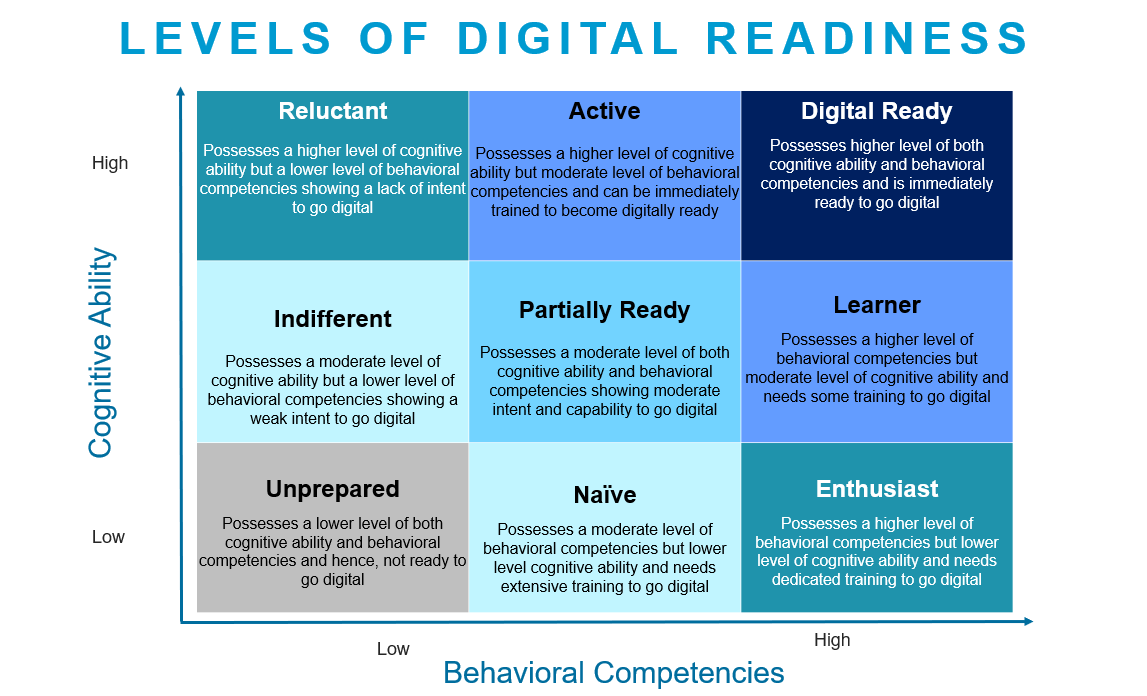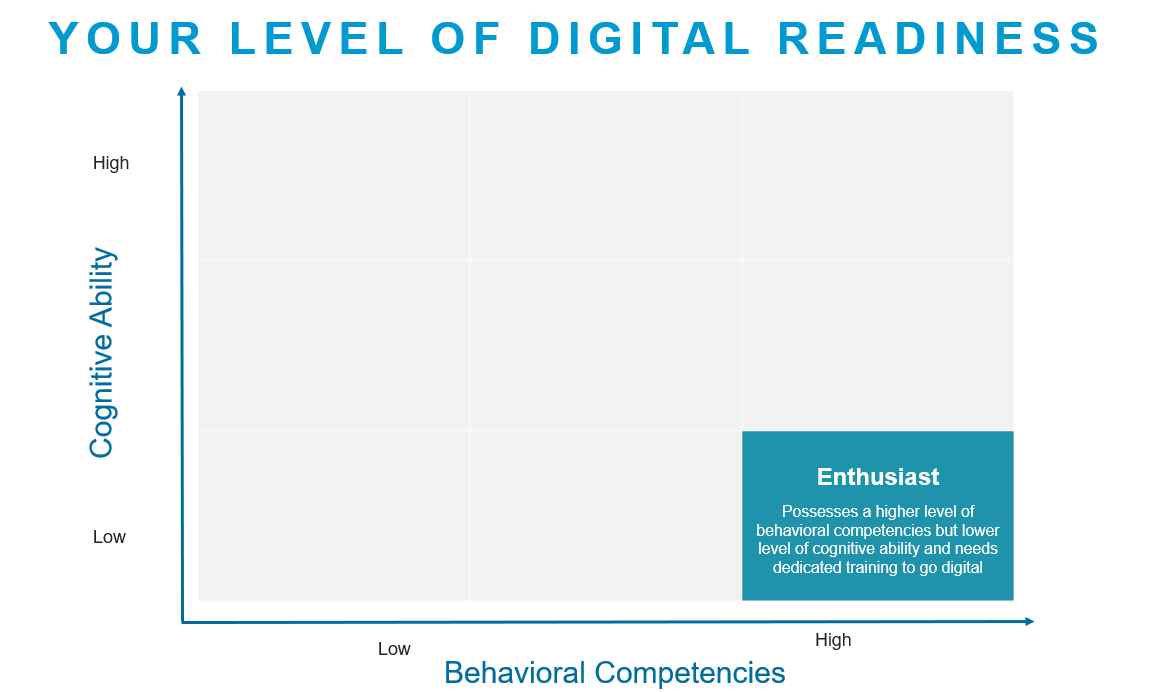Report Section

Mettl Digital Readiness Assessment--
Test Taker Details
S
Sample
Email Address: sample@mettl.com
How to Interpret the Report?
Digital Readiness Assessment:
This assessment aims to test whether the employee possesses suitable behavioral competencies and cognitive skills to adapt to and manage the digital transformation process. The report is designed to help the respondent as well as the line managers understand the digital readiness level of the respondent. This report is organized into two sections:
- Digital Readiness Competencies

Use of Response Styles:
The ideal response style is “Genuine”, and it is recommended for further analysis. However, if any respondent’s response style displays Social Desirability, he/she needs to be considered with caution.
We do not recommend respondents who display Extreme Responding/Central Tendency/Careless Responding as they indicate that the respondent has not attempted the assessments in the desired manner, and that interferes with an understanding of his/her personality since it would not evoke genuine responses from the respondent’s answers. This in turn is expected to interfere with the proceeding decisions, so the respondent may be considered for a re-test. Such cases are usually not considered for a statistical/detailed analysis of scores if required further.
Response Style
Response Style Genuine
Explanation of Response Style:
Genuine
No concerns or red flags just based on response style of candidate.
Social Desirability
If more than 75% of the questions are answered in a manner that indicates an attempt to appear in a falsely positive light or seem ‘socially desirable’.
Extreme Responding
If more than 75% of the questions are answered in a manner that indicates that an individual agrees with the statements at the lower and higher end consistently.
Central Tendency
If the middle response (‘neutral’) is selected more than 30% of the time.
Careless Responding
If more than 95% of the responses selected are from the same direction (i.e. if the candidate selected ‘most like me’ or ‘like me’ from the right-side statement or from the left-side statement alone).
EXECUTIVE SUMMARY
Digital Readiness
Strengths
Collaboration
Likely to be a good team player and collaborate with relevant people to make sure common goals are achieved in an efficient manner.
Inclusiveness
Likely to be understanding and respectful to others who are different from oneself.
Innovation
Likely to have an innovative approach to one's work, working towards deriving novel and original methods at the workplace.
Areas of Development
Mental Agility
Needs to be able to quickly identify patterns and the logical rule underlying those patterns to arrive at solutions. Also needs to be able to apply innovative ways to solve problems.
Resilience
Needs to display positive outlook and deal with stressful situations in a more effective manner.
Openness to Learning
Needs to seek out more challenging experiences and opportunities to develop one's skills and abilities.
EVALUATION OF COMPETENCIES
Ability:
Values shown in above chart are sten scores
1. Ability:
Mental Agility: Low
Unlikely to have the ability to quickly identify patterns and the logical rule underlying those patterns to arrive at solutions. May not be able to gather work related information quickly, from various sources and apply it in innovative ways to solve problems. May not have lateral thinking abilities and fluid intelligence. May not be creative in thinking and in integrating data logically to arrive at solutions.
Intrapersonal:
Values shown in above chart are sten scores
2. Intrapersonal:
Openness to Learning: Moderate
Moderately likely to be open to ideas and suggestions from others in order to pick up new skills and gain knowledge which may be required to perform tasks at work. May sometimes be willing to seek out challenging experiences and opportunities to develop one's skills and abilities. Somewhat likely to focus on developing and improving oneself with every task that one takes up.
Resilience: Moderate
Moderately likely to display positive outlook and may at times deal effectively with pressure by being calm and poised. May occasionally able to recover quickly when faced with setbacks. Somewhat likely to maintain optimal performance despite difficult situations. Moderately likely to use appropriate coping strategies to deal with stressful circumstances.
Interpersonal:
Values shown in above chart are sten scores
3. Interpersonal:
Collaboration: High
Likely to be a good team player and may be able to maintain harmonious and cooperative relationships with team members. Likely to work cooperatively and collaboratively with others, towards achieving common goals. Likely to offer help to others without being asked to do so. Likely to coordinate with relevant people and departments to ensure smooth completion of common goals.
Inclusiveness: High
Likely to come across as a warm, friendly and approachable person and may be courteous and respectful in one's behaviour. Likely to be understanding and sensitive towards others having different perspective from oneself. May be open to understand people who are different from oneself and accommodate to fulfil their needs. May foster an inclusive workplace where individual differences are respected and valued.
Business:
Values shown in above chart are sten scores
4. Business:
Innovation: High
Likely to be high on imagination and originality, often come up with novel methods to do one's work effectively. Likely to challenge the status quo and find novel and better ways of doing tasks so as to improve work processes. Likely to develop new and improved methods, systems and products that would enhance efficiency of one's work.
Change Management: High
Likely to clearly understand the rationale for change mandated by the organization, and may be able to adapt to it quickly. Likely to find synergies between old and new ways of doing things, so as to reduce the disruption to work as much as possible. Likely to deal with ambiguous and unknown situations in a confident manner and may be able to work on tasks, even with limited information and resources.

